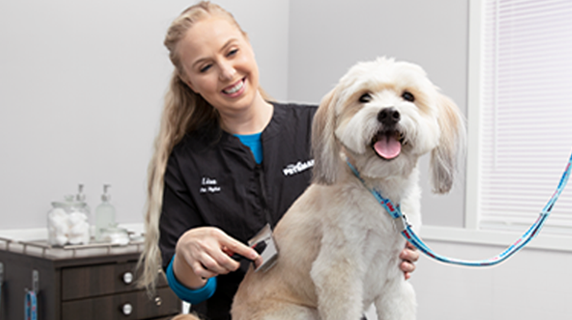4246 Insights
Your source for the latest news and information.
Why Your Dog Secretly Hates Bath Time and How to Change That
Uncover the surprising reasons your dog dreads bath time and discover fun tips to transform their washday blues into a splash of joy!
Understanding Your Dog's Bath Time Anxiety: Common Triggers and Solutions
Understanding your dog's bath time anxiety begins with identifying common triggers that can lead to distress during this routine. Many dogs associate bath time with negative experiences, such as feeling restrained or uncomfortable. Factors like the environment, water temperature, and even the specific products used can significantly impact your dog's emotional response. For instance, loud noises from sinks or bath equipment can be particularly startling. Furthermore, some breeds are more sensitive than others, making it essential to recognize individual quirks and preferences. For more insights on this topic, check out this article from the American Kennel Club.
To help alleviate bath time anxiety, there are several strategies you can implement. Start by creating a positive association with bath time by offering treats or toys during the process. Routine practice can also be beneficial; consider introducing your dog to the tub or shower without water initially, allowing them to explore the area at their own pace. Additionally, using calming products, such as aromatherapy sprays or calming music, can further enhance the experience. Finally, be patient and give your dog plenty of time to adjust to this necessary grooming ritual. If anxiety persists, consulting a professional dog trainer or behaviorist might be beneficial. You can find more helpful resources at The Humane Society.

5 Easy Tips to Make Bath Time an Enjoyable Experience for Your Dog
Bath time can often be a challenging experience for both dogs and their owners. To make bath time an enjoyable experience for your dog, start by creating a calm environment. Begin with a gentle approach, introducing your dog to the bathing area in advance. Use positive reinforcement, such as treats and praise, to associate the bath with pleasant moments. Another tip is to use lukewarm water; extremely hot or cold water can make your dog uncomfortable. Consider investing in a non-slip mat to prevent slipping, which can help your dog feel more secure in the tub.
Next, grooming beforehand can significantly reduce the mess during bath time. Brush your dog's coat to remove loose fur and debris. This not only makes the bathing process easier but also keeps your dog happy and relaxed. When applying shampoo, choose a product that is specifically formulated for dogs to avoid any skin irritations. Follow up with a rinse to ensure all shampoo residue is removed. Lastly, keep the experience fun by incorporating toys or interactive activities. A splash of water play or a favorite toy can create a positive atmosphere, making bath time an enjoyable experience for your dog. For more tips on making bath time smoother, check out this pet care guide.
Is Your Dog Trying to Tell You Something? Signs of Discomfort During Baths
Dogs communicate their feelings and discomfort in various ways, and understanding these signs is essential for a positive bathing experience. If your furry friend is trying to tell you something during bath time, look for behaviors such as excessive panting, whining, or attempting to escape. These actions can indicate stress or discomfort. Additionally, observe their body language; if your dog is tucking its tail, keeping its ears back, or avoiding eye contact, it may be feeling anxious. For further insights into canine body language, you can visit AKC.
Another sign of discomfort in dogs is physical reaction during baths. If your dog is shaking, trembling, or tries to bite at the water or the shampoo, it's a clear indication that they are not enjoying the experience. It's important to recognize these signs of discomfort and address them accordingly. Consider using a calm voice, gentle handling, and rewards to create a more positive association with bath time. For tips on making bath time more enjoyable, check out this resource from The Spruce Pets.